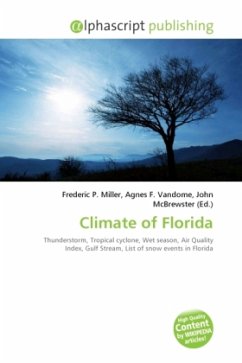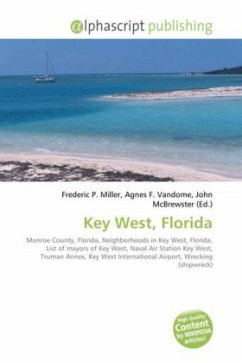
Climate of Florida
Versandkostenfrei!
Versandfertig in 6-10 Tagen
23,99 €
inkl. MwSt.

PAYBACK Punkte
12 °P sammeln!
The climate of North and Central Florida is humid subtropical. South Florida has a tropical climate. There is a defined rainy season from June through September, which are the months most at risk of landfalling tropical cyclones. Thunderstorms, though lightning, lead to several deaths per year statewide. Florida is one of the most tornado-prone states in the United States. During mid summer, dust emanating from Africa affects the state, turning skies white and decreasing air quality. Between October and May, fronts regularly sweep through the state which keeps conditions dry, particularly over...
The climate of North and Central Florida is humid subtropical. South Florida has a tropical climate. There is a defined rainy season from June through September, which are the months most at risk of landfalling tropical cyclones. Thunderstorms, though lightning, lead to several deaths per year statewide. Florida is one of the most tornado-prone states in the United States. During mid summer, dust emanating from Africa affects the state, turning skies white and decreasing air quality. Between October and May, fronts regularly sweep through the state which keeps conditions dry, particularly over the peninsula. Towards the end of the dry season in the spring, brush fires become common statewide. In winters where an El Niño climate cycle exists, rainfall increases while temperatures are cooler statewide. In North Florida, snow and sleet have been witnessed as early as November and as late as April, though most areas do not experience any frozen precipitation during a typical year. Easterly winds off the warm waters of the Gulf Stream running through the Florida Straits keep temperatures moderate across the southern peninsula year round.












